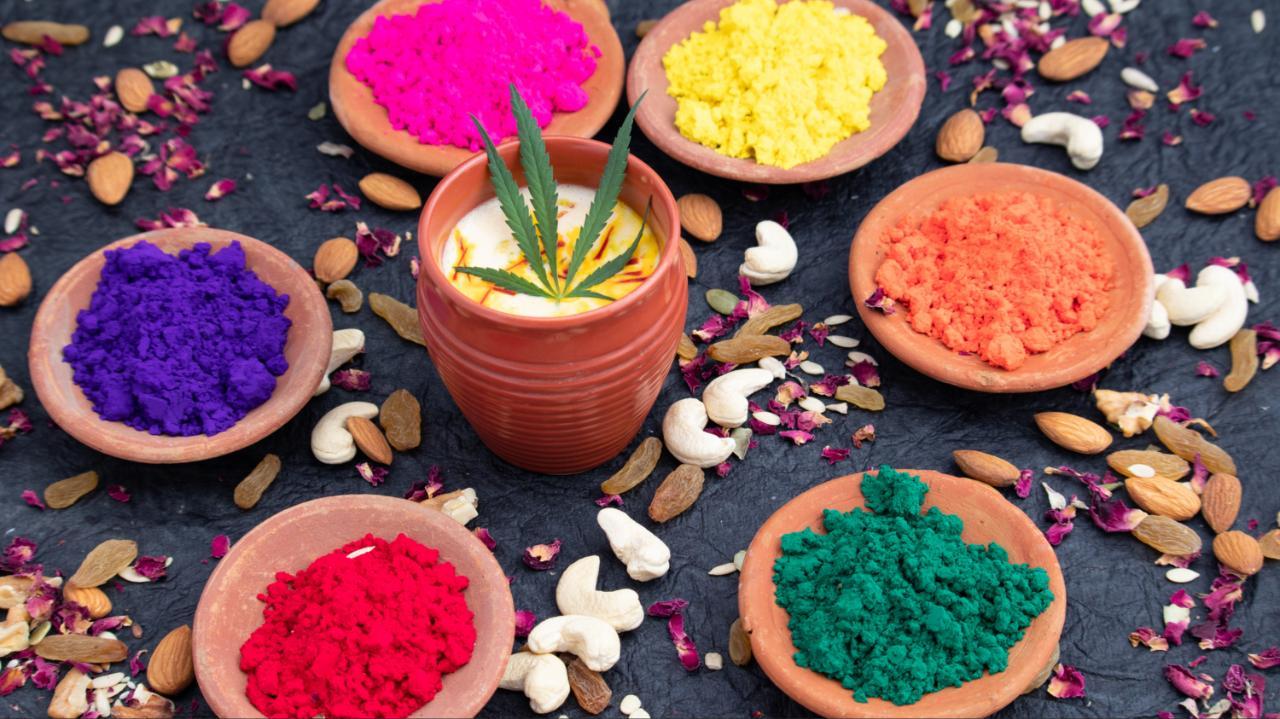From legality, to after effects, medical and industry experts list five important facts you need to know about bhang

Bhang, known for its mild hallucinogenic effects, is prepared by soaking and grinding the leaves of the Cannabis Sativa plant and is usually mixed with milk or water in traditional Indian beverages. Photo/iStock
Closely tied with the festival of Holi, bhang has got a hued reputation due to its recreational usage. According to ‘The Asian Cannabis Report’ published in 2022 by Prohibition Partners around 15 million people consume bhang each year in India (estimates based on official figures from Ministry of Social Justice and Empowerment, Government of India’s Magnitude of Substance Use in India). For the longest time, bhang has been considered a part of our culture, yet there is uncertainty and concerns around legality, content, and impact. Just in time for Holi celebrations, we asked medical and industry experts to clear the air around bhang.
It is legal
Delzaad Deolaliwala, chairman of Pan India Medical Cannabis and Hemp Association explains, “According to Narcotic Drugs and Psychotropic Substances (NDPS) Act, this prohibited the manufacture and selling of cannabis resin and flowers, but permitted the use of leaves and seeds, allowing states to control the latter, effectively avoiding the stigma of being labelled as contraband. The act declared cannabis cultivation legal in India for industrial purposes such as producing industrial hemp or for horticultural use. The NDPS now acknowledge cannabis as a source of high-value oil, biomass, and fibre.”
He further clarifies, “Bhang is not protected by the NDPS Act. According to it, the act only forbids the use of certain sections and cannabis plant preparations, including hash resins produced from the plants or its buds. The acts provide for the use of plant leaves which are the exact features that are used in Bhang.”
Quoting a previous case, Deolaliwala shares, “In the case of Arjun Singh v State of Haryana, the Chandigarh High Court claimed that, according to the NDPS Act, bhang is not “cannabis (hemp)” under the Statute, but is a cannabis plant. Thus, it is not unlawful to eat cannabis leaves under the rule.”
It is used in Ayurveda
Dr Bhupesh Vashisht, chronic diseases specialist and founder of Aas Ayurveda, says, "While some consume bhang as a holy offering in the form of 'prasad', some consider it as a taboo bringing a narcotic effect. Both aspects have their limited understanding and a large populace misses the bigger ambit of consuming bhang on the day of the Holi festival. Bhang or Cannabis is considered one of the five sacred plants in Ayurveda and the single reason for consuming bhang on Holi is to digest the different kinds of delicacies, and sweets made on Holi. The carminative effects of bhang were not hidden from our sages and vaidyas.”
It has been a part of festive celebrations for years
Vashisht outlines, “India is the land of festivals and celebrations, and every festival brings the consumption of specific foods and drinks. Holi is one such festival where people consume 'Bhang' or 'Cannabis sativa' to celebrate this festival. This has been ongoing for centuries as a holy ritual, especially in the northern Indian states."
Deolaliwala adds, “The usage of bhang has cultural significance. As a result of various connotations, we see millions of Indians commonly consume it during auspicious days such as Holi and Maha Shivratri. The taboo around bhang is primarily driven by historical western taboos around the Cannabis plant, with global pressure resulting in India creating the NDPS Act 1985. However, even after the creation of NDPS Act, fortunately, bhang has continued to remain outside it as decided by our lawmakers to pass such an exception."
Take Quiz: How much do you know about the Indian festival Holi?
It is not addictive
Jahan Peston Jamas, Co-founder, BOHECO shares,“Cannabis or hemp, colloquially known as bhang in India, has been a part of our culture for centuries. Ayurvedic science is replete with uses of this plant for a variety of purposes, but the limited knowledge and understanding of Cannabis along with the classification of the Cannabis flower and bud as a narcotic has contributed to the false notion that hemp-based medicine may be addictive. Hemp is known to have less than or equal to 0.3% THC, which is the intoxicating cannabinoid, responsible for the euphoric effect) as compared marijuana, and therefore is non-addictive and non-toxic. Lack of awareness and misconception surrounding it, however, makes people hesitant to try it. Apart from its cultural significance, several studies illustrate that if taken in regulated doses, it can prove to be beneficial for pain alleviation and mental wellbeing."
Regulated intake may lead to benefits
Vashisht says, "Beyond recreational usage, medicinal cannabis contains regularised and prescriptive dosages and quantities of Cannabidiol and THC (a chemical compound that brings ecstasy). This makes medicinal cannabis effective in dealing with myriads of medical conditions such as diabetes, sleeplessness, cancer, hypertension and painful disorders to name a few.”
He champions regulated usage as he insists, “It is in public interest to overcome the taboo around bhang which promotes its only usage as a narcotic, whereas casting a total shadow as a potent elixir the world is looking for over the use of synthetic drugs.”
Also Read: Holi 2023: Follow these recipes to innovate with traditional dishes
 Subscribe today by clicking the link and stay updated with the latest news!" Click here!
Subscribe today by clicking the link and stay updated with the latest news!" Click here!










